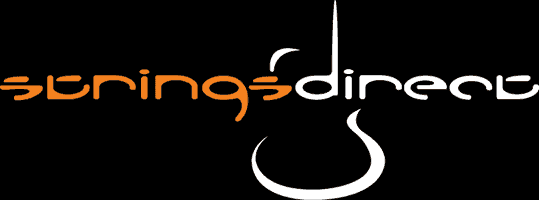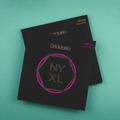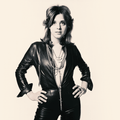A Beginner’s Guide To Slide Guitar Tunings
By Strings Direct – 29 August, 2023
WRITTEN BY THE HAPPY BLUESMAN

If you want to start playing slide guitar, I would recommend experimenting with different slide guitar tunings. There are a variety of these different tunings, and each one has its own sound and feel. Not only this, but each tuning alters the relationship between the strings of your guitar in a unique way, forming different shapes and patterns on your fretboard.
As such, before you start experimenting with different tunings, it is worth understanding the fundamentals of these tunings and how they work. And that is what I will be covering in this article. Here I will run through:
- What slide guitar tunings are, and how they differ from standard tuning
- The most common slide guitar tunings
- Examples of famous blues and blues rock songs that use different slide guitar tunings
This information will give you the basics of different slide guitar tunings, why you might want to experiment with them, and how you can use them in context. This will help you to get started with these tunings. It will enable you to try each of them out and discover what works best for you. And you will then be in a much better position to further study the patterns and chords that form in your tuning (or tunings) of choice.
So with that in mind, let's get into it! Here is everything you need to get started with different slide guitar tunings:
What are slide guitar tunings?
In strict technical terms, there is not really such a thing as a 'slide guitar tuning'. A more accurate way to describe the tunings commonly used by slide guitarists, would be to refer to them as 'open tunings'. However, these open tunings are used far more often by slide guitarists than by guitarists playing 'normal' guitar. This is particularly the case within a blues and blues rock context. As such, these open tunings are often categorised broadly as 'slide guitar tunings'. And for this reason I will be using the terms interchangeably throughout here.
Put simply, an open tuning is one where your open strings are tuned to form a chord. In other words, you don't need to place a single finger down on your strings to form a chord; you just need to play all of your 6 strings at the same time. And in doing so, you will play a chord.
The type of chord you form will depend on the open tuning you are using. However the most common open tunings all form major chords. And thankfully, the naming convention for open tunings is fairly straightforward. Each open tuning is named after the chord that it forms when you play the open strings.
In open E tuning for example, when you play all 6 strings, you form an E major chord. When you play in open D tuning, you form a D major chord, and so on.
The most common open tunings amongst slide guitarists are E, D and G. Technically though you can tune your guitar to form any major chord. And so although they are less common, you can also tune your guitar to open A, B, C and F etc.
You can also do the same with sharp and flat chords. So you can tune to open F#, G# and C# etc. In fact, you can tune your guitar to any chord that you so wish! Albert Collins for example played in open F minor tuning using a capo.
Having said that, whilst this tuning worked brilliantly for Collins, within a blues and blues rock context, these tunings are much less common. As such, here I will be focusing on the open tunings most commonly used by blues guitarists. And these are as follows:
Open G tuning
Open G tuning was one of the first slide guitar tunings to be adopted by Delta slide players in the early 20th century. Compared with standard tuning, 3 of the strings are tuned down in pitch in open G. For this reason, open G is sometimes referred to as a 'slack' tuning. This is because the process of down tuning reduces the tension across the strings.
In open G tuning, the low E string is tuned down a whole tone to D, the A string is tuned down to G, and the high E string is also tuned down to D.
In open G tuning, the pitches of the strings on your guitar are as follows:

As noted above, when compared with standard tuning - the 6th, 5th and 1st strings in open G tuning are all tuned lower in pitch. The other 3 strings are tuned to the same pitch in both standard and open G tunings. You can see this in the table below, where the altered strings are highlighted in yellow:

In this way, the open strings contain all of the notes present within a G major chord - G B D. So when you play all of the open strings together, you play a G major chord.
Open G tuning is used in a whole range of notable blues and blues rock songs. Just some examples are as follows:
- Robert Johnson uses open G tuning in a number of his most famous songs. This includes 'Walkin' Blues', 'Come On In My Kitchen' and 'Cross Road Blues'
- George Thorogood plays in open G tuning in the song 'Bad To The Bone'
- In the song, 'Who's That Coming?', Rory Gallagher plays using open G tuning
- Muddy Waters plays in open G tuning in his song 'I Can't Be Satisfied'
As you can see from the list above, a range of blues guitarists have used open G tuning to produce quite different sounds. Having said that though, because open G was one of the most popular and widely used slide guitar tunings amongst early Delta guitarists, it tends to be better associated with country blues and folk styles.
Open D tuning
Like open G tuning, open D is also a 'slack' tuning. This is because when compared with standard tuning, 4 of the strings are tuned downin pitch. The low E string, B string and high E string are all tuned down a whole tone, and the G string is tuned down a semitone.
In open D tuning, the pitches of the strings on your guitar are as follows:

As noted above, when compared with standard tuning - the 6th, 3rd, 2nd and 1st strings in open D tuning are all tuned lower in pitch. The other 2 strings are tuned the same in both standard and open D tunings. You can see this in the table below, where the altered strings are highlighted in yellow.

In this way, the open strings contain all of the notes present within a D major chord - D F# A. So when you play all of the open strings together, you play a D major chord.
Open D tuning is used in a wide range of notable blues and blues rock songs. Just some examples are as follows:
- Elmore James plays in open D tuning in the song 'Dust My Broom'. This features one of the most famous slide guitar riffs of all time
- Robert Johnson plays open D tuning in the song 'Hellhound On My Trail'
- Ry Cooder uses open D tuning in his beautiful slide guitar instrumental, 'Feelin' Bad Blues'
- In his cover of the Bob Dylan song 'Highway 61 Revisited', Johnny Winter plays slide using open D tuning
Of the three different slide guitar tunings listed here, I would argue that open D is arguably the most versatile. As you can see from the list above, a range of guitarists have used open D tuning to create quite different songs. So if you are looking for a tuning that will help you to play a wide variety of different blues songs, open D could work very well.
Open D is also useful because you can easily turn it into open E tuning. All you need to do is place a capo on your second fret, and you will then be in open E tuning (whilst still having the majority of your fretboard open to you).
Open E tuning
Lastly we have Open E tuning. Unlike open D and G, open E is not a 'slack' tuning. In fact, compared with standard tuning, the 3 strings that are altered in open E are all tuned up in pitch. Both the A and D strings are tuned up a tone, and the G string is tuned up a semitone.
Compared with open D and G tunings, electric slide guitarists tend to use open E tuning more commonly. Duane Allman famously used open E when playing slide. And Derek Trucks has since gone on to favour the tuning too.
In open E tuning, the pitches of the strings on your guitar are as follows:

As noted above, when compared with standard tuning - the 5th, 4th and 3rd strings in open E tuning are all tuned higher in pitch. The other 3 strings are tuned the same in both standard and open E tuning. You can see this in the table below, where the altered strings are highlighted in yellow.

In this way, the open strings contain all of the notes present within a E major chord - E G# B. So when you play all of the open strings together, you play a E major chord.
Open E tuning is used in a lot of notable blues and blues rock songs. Just some examples are as follows:
- To my knowledge, Duane Allman almost exclusively played in open E tuning when playing slide. As such, you can hear him using this tuning in all of his slide work. The song 'Statesboro Blues' provides just one example of Allman playing in open E
- Like Duane Allman, Derek Trucks also uses open E tuning in the vast majority of his playing. The song 'Midnight In Harlem', by The Tedeschi Trucks Bands provides just one example of Trucks using the tuning
-
Billy Gibbons plays in open E tuning in the ZZ Top song, 'Just Got Paid'
- Joe Walsh uses open E tuning in the song 'Rocky Mountain Way'
As you can see, when compared with open D and G tunings, open E is used much more frequently in a blues rock context. So if you are looking to play electric slide in the style of players like Duane Allman, Derek Trucks and Billy Gibbons, I would recommend using open E tuning.
Why do slide guitarists use open tunings?
Understanding the fundamentals of different slide guitar tunings is a great first step. But if you want to get to grips with these new tunings - I think it is important to understand why they are so popular amongst slide guitarists. This will make it easier for you to appreciate the benefits of the tunings. And in turn, this will help to keep you motivated when you are working through the new fretboard patterns and connections that you will encounter in each of these different slide guitar tunings.
Regardless of which of the open tunings you use, they all offer a variety of benefits when playing slide guitar. The most significant of these is that it is much easier to play chords with a slide in an open tuning, rather than in standard tuning.
It is challenging to play regular chords and barre chords using a slide in standard tuning. This is particularly true of barre chords - the majority of which you have to fret using 3 or 4 fingers in standard tuning. And when you are wearing a guitar slide, this is tricky - if not impossible - depending on the chord and voicing you are trying to use.
Conversely, in open tuning, playing barre chords is very straight forward. This is because when you play the open strings together, you form a major chord. And so you can create further barre chords by keeping the relationship between the notes the same and just moving them to another part of your fretboard. This might sound complicated, but it is much easier to visualise on the fretboard. Let's look at an example in open E tuning:

As you can see, in open E tuning, you can form a G major by barring all 6 strings at the 3rd fret. And to create an A major chord, all you need to do is move the same shape up two frets.
The good news here is that this is true for all open slide guitar tunings. The only difference is that the position of each of the major chords will change, depending on which tuning you are using. And again, the good news is that this isn't as complicated as it might sound. In open G for example, you can play a G major chord by strumming all 6 open strings. As such, you can then play an A major chord by barring all 6 strings with your slide or a single finger at the 2nd fret.
The only piece of theory you need to know to apply this idea all over your neck in different slide guitar tunings is the notes of the chromatic scale. And don't worry, if this concept is new for you, I cover it in much more detail in this article '5 Steps To Unlock Your Guitar Fretboard'.
With that, and the information above, you have everything you need to move these major barre chord shapes around your fretboard in a variety of different open tunings.
This is significant, because one of the key characteristics of slide playing is that you typically play multiple strings together when soloing. This is a key part of the slide guitar sound, and a technique that almost all slide players use.
The simple fingerings that appear in open tunings when you play major chords helps you to mix single notes and chords with greater ease when you are playing slide. Not only this, but it is easier to play a whole range of different chords with simpler fingerings in open tunings.
You can see this in a lot of the guitar playing of The Rolling Stones. Keith Richards often uses open tunings in his songs, even when he is not playing slide. In a whole range of songs for example - including 'Honky Tonk Women' and 'Start Me Up' - Richards plays in open G using simple fingerings.
Which slide guitar tuning is right for you?
As is often the case when it comes to the guitar, there are so many different choices and issues to consider when it comes to playing and gear. And it is no different when you are looking at these different slide guitar tunings.
The good news is that you can experiment with all of these different tunings with very little risk. All it will cost you is some time, and - in the worst case scenario - perhaps a set or two of new guitar strings. So in the beginning, you can experiment quite freely with different tunings until you discover what works best for you. And don't be too surprised if you discover that what works best for you comes down to feeling and what suits your playing style, rather than what you think should work best.
For example, you might be a huge Duane Allman fan and think that open E is going to be the tuning that will work best for you. But after experimenting and playing around with the different slide guitar tunings listed here, you might find you are more comfortable in open G.
Whatever the case may be, once you do find the one or two tunings that work best, I would recommend sticking with them. It is tempting to keep jumping around between different tunings and experimenting and having fun. And that is important in the beginning. But if you want to become a proficient slide guitar player, you need to spend time developing and understanding the patterns and chords formed in each tuning.
* * * * *

The Happy Bluesman
www.happybluesman.com
@happybluesman






